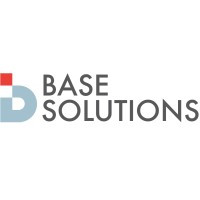IT Firm in Arlington Shares Tips on Handling IT Support Tickets Effectively
Understanding how to handle IT support tickets begins with treating them as more than isolated requests.
Each ticket represents customer expectations condensed into a single moment of truth. The way a company responds becomes a story told in real time, shaping trust, which matters far more than most realize.
Among high-growth service teams, 51% rely on help desk systems. Numbers like this speak to modern workflow realities as much as strategy. A dependable helpdesk system filters the noise, highlights what cannot wait, and keeps momentum steady.
Without the right foundational support, even strong teams can watch small issues turn into fires that should have been contained at the source.
Atul Bhagat, President/CEO at BASE Solutions, says, “A ticket is the smallest stage with the largest spotlight.” Every reply is a performance judged instantly by the audience that matters most – the customer.
In today’s article, one of the most trusted IT companies in Arlington shares practical strategies to streamline support tickets and boost productivity.
Those who approach support with precision and consistency transform routine requests into proof points of reliability and care.
How To Handle Support Tickets As Strategic Business Signals
The real story of how to handle support tickets begins long before a reply is written. Every ticket is a customer raising their hand with an expectation attached. Some signal urgent problems, others point to inefficiencies, and many offer clues about the overall customer experience.
Support Tickets Are Indicators Of Trust
Every request reflects the health of the customer relationship. High volumes of repetitive issues often signal gaps in training or product design. By analyzing patterns across tickets, leaders gain a direct line to customer trust.
Why Ticket Prioritization Processes Matter
When there is a backlog of support tickets, you have clear signals of strain. However, when teams assign ticket priority based on urgency, impact, and customer value, they transform a queue into a roadmap. Strong prioritization helps prevent small issues from becoming reputational risks.
How to determine ticket priorities:
- Ask: Does this ticket affect multiple users or just one?
- Check: Will delayed resolution risk a client relationship?
- Measure: Is the cost of inaction greater than the time spent resolving?
Prioritization guides resources to where they matter most and reduces the hidden cost of inattention.
Identify Strategic Lessons From Support Patterns
Tickets, when studied at scale, reveal operational truths. A recurring cluster around a feature might point to design flaws. Frequent questions about billing could highlight unclear policies. By placing these insights into strategic reviews, companies align product, operations, and support into one continuous feedback loop.
Closing The Loop With Leadership Insight
Leadership often overlooks how much actionable knowledge sits inside support queues. Each ticket contains signals that highlight both strengths and vulnerabilities within the business. By studying them closely, executives gain a clearer sense of where performance is strong and where improvement is critical.
- Tickets often highlight areas of operational excellence that can be scaled.
- Recurring issues expose weak points that require investment or redesign.
- Patterns across multiple tickets provide foresight into potential risks.
- Recognizing signals early allows leaders to act before problems escalate.
Key Insight: Leaders who approach support data with this mindset shift from reaction to anticipation, building resilience into every customer interaction.
How To Answer Support Tickets With Precision And Context
The craft of how to answer support tickets lies in combining accuracy with empathy. A reply carries more than technical instructions – it reflects the company’s discipline, values, and respect for the customer’s time. Each ticket becomes a stage where clarity and professionalism either reinforce or weaken trust.
Build Precision Into Every Reply
Precise and clear replies ensure issues are closed quickly and with confidence. When a ticket is answered with exact details, the customer feels secure that their concern has been fully understood. Ambiguity adds risk, while precise solutions reduce the chance of repeat requests.
Answering With Contextual Awareness
Context separates strong support teams from forgettable ones. By anchoring replies in the customer’s history, the interaction feels personal rather than transactional.
- Review prior tickets to avoid repeating instructions
- Adapt tone to the urgency of the situation
- Reference specific tools or environments unique to the customer
A response that reflects awareness signals attentiveness, creating an impression of partnership rather than process.
The Financial Value Of Thoughtful Answers
Every answer has a commercial impact. Research shows that customers are willing to spend 17% more with a company that offers outstanding customer service. Precision and context in replies therefore go beyond satisfaction – they directly influence revenue and loyalty.
Transforming Responses Into Continuous Insight
Tickets are also a feedback engine. Teams that catalog recurring themes uncover weaknesses in product design or gaps in customer onboarding.
- Identify common phrases or complaints that surface repeatedly
- Share trends with product or operations leaders regularly
- Use support data to inform training and knowledge base updates
By looping insights back into the business, each answered ticket drives improvement beyond the support desk.
Key Insight: Precision, context, and reflection turn replies into levers of growth. Each answer is an opportunity to strengthen both customer relationships and business performance.
How To Track Support Tickets For Trends And Accountability
Mastering how to track support tickets is about creating visibility across every stage of the support process. Tracking is all about understanding the flow of work, spotting patterns, and holding teams accountable for performance.
Businesses that treat tracking as strategy gain insight into efficiency and customer expectations at scale.
Establishing Clear Metrics For Tracking
Metrics form the backbone of ticket tracking. By selecting indicators that reflect both speed and quality, businesses create an honest view of performance.
- Average time to first response provides a measure of accessibility, showing how quickly customers can expect acknowledgement when they raise an issue.
- Total resolution time captures efficiency by tracking how long it takes to fully close the loop on a customer’s request.
- The number of reopened tickets highlights quality gaps, signaling when initial responses were incomplete or failed to address the core problem.
- Customer satisfaction ratings per ticket bring a human layer into the data, offering immediate feedback on whether interactions actually meet expectations.
When metrics are defined clearly, they turn daily operations into measurable outcomes leaders can trust.
Identifying Trends In Ticket Data
Patterns within tickets reveal more than customer frustrations – they map the health of the entire service operation.
- Clusters of issues around a specific product or feature can point to design or usability challenges that require attention from development teams.
- Spikes in ticket volume after product updates suggest that release processes or communication strategies may need refinement.
- Recurring complaints surfacing month after month reveal training gaps that can be addressed through knowledge bases, FAQs, or additional customer guidance.
These trends point directly to areas where improvement reduces volume and strengthens the customer experience.
Creating Accountability Across Teams
Tracking builds accountability by tying outcomes to ownership. When teams see where tickets are delayed or mishandled, it highlights coaching opportunities and exposes bottlenecks. This visibility also reinforces positive performance by showing where support agents excel.
How to Track Support Tickets – Advanced Methods
| Tracking Focus | Business Value Gained |
| Sentiment Analysis | Identifies tone and satisfaction levels within tickets, highlighting risks before churn occurs. |
| Resolution Path Mapping | Shows which workflows consistently lead to faster closures, helping teams replicate success. |
| Agent Workload Balance | Reveals uneven distribution of tickets across staff, reducing burnout and increasing efficiency. |
| Cross-Department Visibility | Exposes when tickets touch multiple teams, uncovering bottlenecks outside the support desk. |
| Predictive Analytics | Uses historical patterns to forecast spikes in demand, allowing resources to be allocated ahead of time. |
How To Categorize Support Tickets To Reduce Volume Long-Term
Practical Wins From Categorization
- Sorting tickets by complexity routes simple password resets or routine requests to automation, freeing skilled staff for cases requiring deeper knowledge.
- Clustering tickets by product or service type reveals where product design or documentation gaps exist, creating direct opportunities to reduce repeat inquiries.
- Separating urgent cases from general requests prevents high-value clients from sitting in queues, ensuring key accounts receive immediate attention.
- Tracking category trends over months produces intelligence that leadership can use to address root causes, refine onboarding, or adjust training.
A Different Way To See Categorization
Support Desk Journal, Entry #229:
- Ticket 1: Filed under “billing.” Resolved in 3 minutes.
- Ticket 2: Tagged as “system access.” Escalated and cleared the same day.
- Ticket 3: Misfiled, bounced between three departments. Closed after 48 hours.
The variable wasn’t the difficulty of the issue – it was the category. Proper classification created speed, while errors created friction. The lesson is simple: categories act as the hidden hand that controls flow, pace, and satisfaction.
Linking Categorization To Reduction
Research shows that customer satisfaction peaks at 84.7% when response times are between 5 to 10 seconds. Categorization makes these numbers achievable by sending requests to the right place instantly, building the foundation for mastering how to reduce support tickets over time
Enhance Your Business With Smarter IT Support Solutions From Arlington’s Leading IT Company
Our team has refined the way businesses handle tickets, blending precision with efficiency so every interaction strengthens loyalty. By aligning IT support processes with larger business goals, we deliver measurable improvements in both satisfaction and performance. Contact a reliable IT firm in Arlington today to streamline your support systems, resolve issues faster, and keep your business moving forward with confidence.




